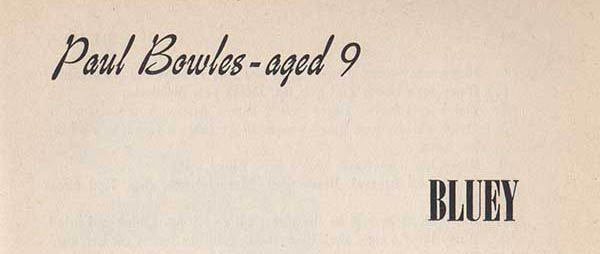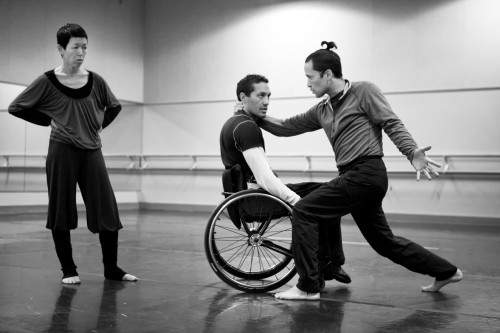Weekend Writing Prompt: Make it rain.
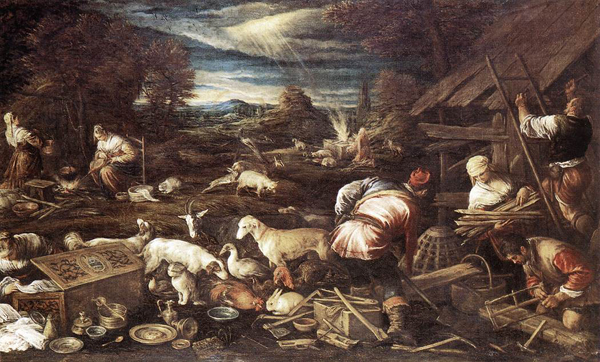
Hiphop has moved—swaggered, even—on from the 2006 rules and regulations. Sure it has. So—yes, I guess—we’re well past making it rain on country’s exotic dancers. Or, well, they’re well past it, those who make themselves their livings rhyming over a usually 4/4 beat.
But maybe you don’t have to be. Over it, I mean. (I mean, who are you to follow the moving-on happenings in the game of being on the grind, right?)
So this weekend when you sit down to do a little writing, do it with a little of the lesson somewhere in Ms. Hoang’s earlier-today lovely disorganalia on overwriting by going in on a story and overwriting it to the point where you move past a disappointing lack of discipline to that moment where excess overwhelms all its many sins and leaves one’s writing in a pure state. Pile on the muck until the muck becomes the point and the muck becomes the beauty.
And if you don’t feel like making it rain in that way, make it rain like this:
READ MORE >
The Adventures of Bluey and the Childhood Writings of Paul Bowles
“Drugs, bigamy, desertion, lawsuits, the plague: these are hardly the elements one expects to find in the writings of a nine year old.”
—Christopher Sawyer-Lauçanno, biographer of Paul Bowles
When Paul Bowles was 9 years old, he created a diary that documented the adventures and pitfalls of imaginary characters who went on wild journeys and were continually surrounded by death, disease, chaos, and crisis—all of which were conveyed by little Paul in a tone that is eerily mute, terse, and affectively stunted while also being intellectually sophisticated and highly developed in terms of narrative. The 3rd person diary entries have a strange and disturbing quality to them—we immediately pick up on Paul’s obsessive preoccupation with names (characters, places), numbers, measurements, etc. In the entries, Paul invented, among other things, a drug called “postage hypodermic” and a plague called the “Green Horror” (“Marshelle gets Green Horror. Marshelle dies of Green Horror…. Dukol Whitman dies of Green Horror….”). We also get a sense of the way he was trying to emulate the adult world and—in doing so—revealed its utter absurdity. I can’t get over how evocative and fascinating Paul’s childhood writings are—and to think that he had to pen them in secrecy, fearing the disapproval of his father, who once beat him and took his journals away for 2 months when he was caught scribbling.
Below the cut is a brief excerpt from Paul’s childhood narrative, which consists of over 450 entries in total. This particular passage, which was published by surrealist literary magazine View, deals with the mishaps of Bluey Laber Dozlen, who travels to Wen Kroy (“New York” spelled backward) from an unknown European city.
READ MORE >
On over-writing, distance, fiction, theater, and film: A series of disorganized thoughts
Last night, I saw Black Swan.
Last night, I read Linda Lê’s The Three Fates.
Last night, I didn’t fall asleep until after 4am.
The first two things contributed to the last thing. I’m usually a very good sleeper. It’s one of the few ways I cope with anxiety: sleep. It is something I’ve trained myself to do since I was a kid. That sounds stupid, but I’m sure a lot of people here have problems sleeping. We’re an anxious lot, what else can I say?
Last night, while I was trying to get to sleep, I kept thinking about Linda Lê’s book. The Three Fates is a book about a two sisters and a cousin (the three fates) who want to bring their old father (called King Lear) from Vietnam to France to show off their successes. The three fates were whisked away from Vietnam before the fall of Saigon. Their father remained. The book is written in this hyper-stylized way, seemingly over-written, over-the-top, a fairy tale with characters unabashedly stolen from other literary works (notably: plays). What sticks to me with this book though is how over-written it is. Every sentence is excessive. If this were a fiction workshop, I’d write next to every single line: “Over-written.”
assist
This semester I teach a service learning creative writing class. I am excited and anxious (first time I’ve taught the class). “Service learning” palms a galaxy of definitions. Here is mine, as I’ve been thunking on it:
1. You must have a focus. I do. Empathy at its core, and I might write more expansively here later about this complex idea (and the word empathy itself), but my concept includes a literature list, books, excerpt readings, the power of writing, to show, to act as an actual social tool. Like a hammer. Seriously: Like a hammer.
2. You must engage with the community. Feet on ground, ass in seat. We will. The students will meet a minimum of 7 times—in one semester–with their community partners. We will create a print anthology and give a public reading, in a space OFF university grounds.
3. You must reflect. Why even do this? It’s not enough to say, “it’s a good thing”, “giving back” “whatever cliché.” Blar. I think the class, for the students, is pretty meaningless without serious reflection on the process, or why community work is even important, or why we might want to even talk/walk with someone not ourselves. So what? Always a great question. I want the students to answer me when I kindly and firmly ask, “So what?”
Anyone taken one of these classes? Taught one? Any advice? I’m not jesting—I haven’t done this. Any exhortation, forewarning, steer, 2.4 cents worth? What is service learning to you? Our model is, as writers with CW writerly skills (many prerequisites to take this class), to “tell” the stories of marginalized populations. The writers and partners meet to tell the community partner’s story (one or many), in a poem, story, or essay. Is that the best way? What do you think?
Misremembering the ending

A childhood trauma:
I am five or six and I am watching the animated version of Russell Hoban’s The Mouse and His Child. At the end of this film, the mouse—a windup toy—and his child—same—find themselves at the bottom of a lake, and find themselves staring at a can of dog food. On the can of dog food is a recursive image: a dog standing next to a can of dog food with a label that features that dog standing next to a can of dog food with a label that features…
The toy mice are stuck at the bottom of the lake, peering into the label, the child tasked with counting the number of dogs. And so the child does forever and ever and ever, and the film ends, and I am sent to bed, and I spend the subsequent decades sometimes pondering the concept of eternity until I am filled with anxiety and my neck begins to sweat. One dog, two dogs, three dogs, four…
After the cut is the animated version of The Mouse and His Child. Skip ahead 50 or so minutes to watch the scene in question.
READ MORE >
Luke Wilson on Writing

Luke Wilson in a movie I watched on cable called The Family Stone:
“Maybe you should stop…(Luke puts hand on Sarah Jessica Parker’s hand)…just stop…stop trying…it’s exhausting…trying to keep that lid screwed on so tight…just…ah…you know…relax…”
The xerox machine: printing press of the people
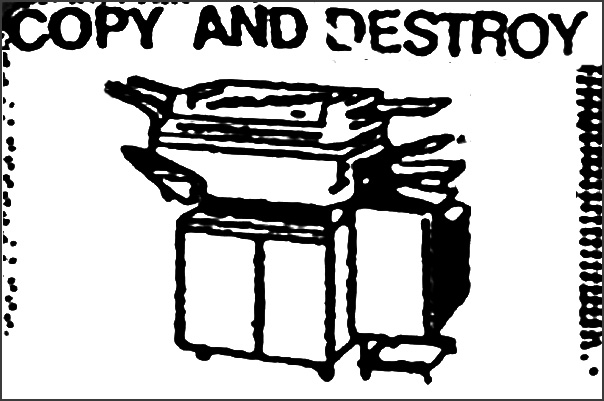
Karen Lillis is currently serializing a memoir about working at St. Mark’s Bookshop called Bagging The Beats At Midnight: Confessions of an Indie Bookstore Clerk over at Undie Press. Her recent installment, titled “People Who Led Me to Self-Publishing,” discusses the inspiring and energetic figures she encountered, people who took artistic matters into their own hands by making sloppy, lo-fi xeroxed booklets that were sold on a special consignment rack at St. Mark’s. Karen reminds us that writers such as Anais Nin, William Blake, Walt Whitman, Kathy Acker, Gertrude Stein, and others all self-published at one point. There’s a certain magic about it—the immediacy of it, the openness, the way any wing nut or fanatic or obsessive outsider can be given an equal hearing on the consignment rack. No filtration or editorial process—just print, copy, distribute.
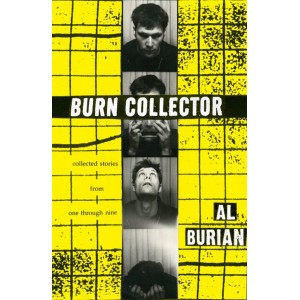 In a recent email I sent to Al Burian, I wrote that I was interested in bridging the gap between the small press/indie publishing world and the self-publishing/zine world. Al is kind of a cult figure in the self-publishing world, but is probably virtually unknown to small press and indie lit readers (although he did get some kind of honorable mention in The Best American Nonrequired Reading series one year). I’ve been reading his zines since I was 13 and I’m still totally obsessed with them. Since Al Burian was my favorite zine writer, over the years I let everyone I knew borrow his writings—teachers, friends, family. Some instantly became obsessive fans of his work as well. Since last month Al’s out-of-print collection of early zines, titled Burn Collector, is finally back in print after being republished by PM Press. (You should check it out—I’ve probably read it more times than any other book in my life.) Al’s zine Burn Collector and others like his inspired me to start self-publishing when I was 15.
In a recent email I sent to Al Burian, I wrote that I was interested in bridging the gap between the small press/indie publishing world and the self-publishing/zine world. Al is kind of a cult figure in the self-publishing world, but is probably virtually unknown to small press and indie lit readers (although he did get some kind of honorable mention in The Best American Nonrequired Reading series one year). I’ve been reading his zines since I was 13 and I’m still totally obsessed with them. Since Al Burian was my favorite zine writer, over the years I let everyone I knew borrow his writings—teachers, friends, family. Some instantly became obsessive fans of his work as well. Since last month Al’s out-of-print collection of early zines, titled Burn Collector, is finally back in print after being republished by PM Press. (You should check it out—I’ve probably read it more times than any other book in my life.) Al’s zine Burn Collector and others like his inspired me to start self-publishing when I was 15.
Actually I Like That Bulgakov Book With the Dog But No One Comments Unless Things Are Contentious

What is the most exciting non-human creature in your novel? Mine is a capybara. If you say “dog” or “adorable dog” or “talking dog” then you are everything that’s wrong with contemporary literature.

